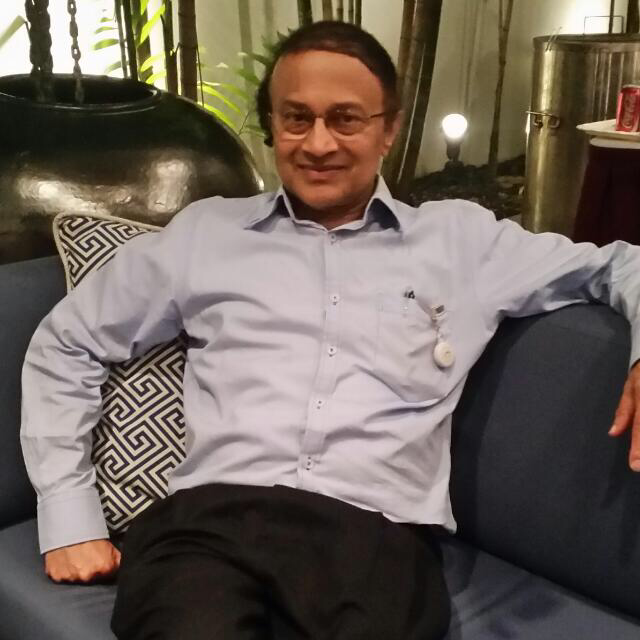By Dr V P Nair
MBBS, MRCP-UK, MRCP-Ire, MRCGP-UK, FAMS-Cardiology S’pore, PBM, FRCP-London, FRCP-Ireland, FRCGP-UK, FRCP-Edinburgh, FCCP, FACC-USA, FESC-Europe, FSCAI-Interventional Cardiology USA
Consultant Cardiologist
Mount Elizabeth Medical Centre (Novena & Orchard), Singapore
Introduction
Technological advances in medical science have made it possible to treat many end-organ or tissue conditions with organ transplantation. The evolution of organ transplantation has resulted in extended lifespans and better quality of life for patients with end-stage diseases. The negative aspect is that it in turn causes an increased demand for the precious organs. The persistent organ shortage requires a careful reconsideration of potential donors. Greater awareness among our population and cooperation of neighbouring countries will be a great boost for organ transplantation.
For end state organ failure, such as liver failure and heart failure, organ transplantation is by and large, the only effective treatment. Although end stage renal disease patients can be treated through other renal replacement therapies, including dialysis, kidney transplantation is generally accepted as the best treatment for better quality of life and cost effectiveness. Kidney transplantation is by far the most frequently carried out transplantation worldwide.
It is widely recognized that living-related donor (LRD) renal allografts have a higher overall graft survival than cadaver donor transplants. One can postulate that part of this is attributable to LRD kidneys being obtained under optimal conditions from healthy donors, whereas cadaveric kidneys may have experienced injury as a result of inflammatory events around the time of brain death.
History of organ transplants
1905: The first cornea transplant was performed by Dr Eduard Zirm at Prague, Czech Republic, making it the first type of transplant surgery successfully performed.
1917: First skin graft was performed by Sir Harold Gillies Queen Mary’s Hospital in Kent, UK.
1954: First successful living-related kidney transplant led by Dr. Joseph Murray and Dr. David Hume at Brigham Hospital in Boston USA.
1966: First successful pancreas/kidney transplant led by Drs. Richard Lillehei and William Kelly at University of Minnesota USA.
1967: First successful liver transplant led by Dr. Thomas Starzl at the University of Colorado in Denver.
1967: First successful heart transplant led by Dr. Christiaan Barnard at Groote Schuur Hospital in Cape Town, South Africa.
1981: First Successful heart/lung transplant led by Dr. Brice Reitz at Stanford University Medical Center, Stanford, CA.
1983: First successful single lung transplant led by Dr. Joel Cooper from the Toronto Lung Transplant Group, at Toronto General Hospital in Canada.
1986: First successful double-lung transplant led by Dr. Joel Cooper from the Toronto Lung Transplant Group, at Toronto General Hospital in Canada.
1989: First successful small intestine transplant into a child, led by Dr. Olivier Goulet in Paris, France.
1998: First successful hand transplant led by Australian Dr. Earl Owen and Frenchman Dr. Jean-Michel Dubernard in a 13-hour long operation in Lyon, France.
2005: First successful partial face transplant led by Dr. Bernard Devauchelle and Dr. Jean-Michel Dubernard in Amiens, France.
2010: First full face transplant at Barcelona’s Vall d’Hebron hospital, Spain.
Types of donors
1. Deceased (or Cadaveric) Donor: This is an organ which comes from a person who has just died and the family has given permission for the organ to be donated for transplant.
2. Living Related Donor (LRD): A kidney or part of liver which comes from a blood relative such as a parent or siblings. Kidneys from close relatives (siblings, parents) tend to be better matches because of blood and antigen compatibility. As such, there is less chance for rejection of the kidney, and the anti-rejection medications dose and number to be taken may be lower.After the medical evaluation for health and compatibility, a transplant can take place almost immediately – unless the donor has medical issues which need to be resolved.
For those with genetic diseases, like Polycystic Kidney Disease (PKD), other family members are often affected as well, making living related donation more difficult.
3. Living Unrelated Donor (LURD): A donated organ from someone not related to the person who needs a transplant such as a spouse or friend.
Outcome of LRD and LURD in kidney transplant is comparable in terms of patient and graft survival, acute rejection rate and estimated GFR despite differences in demographics, HLA matching and re-transplants of recipients.
Procurement (acquisition)
Procurement of organs for transplantation involves the removal of organs from the bodies of deceased persons or living donors. This removal must follow legal requirements, including the definition of death and consent.
Kidney donation by well selected living donors with good health carries negligible risks. This can only be ensured through rigorous selection procedures, careful surgical nephrectomy and follow up of the donor to ensure the optimal management of untoward consequences.
The Transplantation Society
The Transplantation Society is a Non-Governmental Organization (NGO) which serves as an international forum for the world-wide advancement of organ transplantation. Members include professionals with an active interest in basic science, clinical research and/or improving clinical practice in the field of transplantation. The Transplantation Headquarters, established in 1999, is located in Montreal, Canada.
Human Organ Transplant Act (HOTA) Singapore (please also see www.liveon.sg)
The first cadaveric kidney transplant in Singapore was performed in 1970, followed by the first heart and liver transplants in Singapore in 1990. Today, our hospitals can perform kidney, liver, heart, lung, skin, bone and cornea transplants.
Under the HOTA, four organs, namely the kidneys, liver, heart and corneas, can be recovered in the event of death for transplantation. The organs will give patients with organ failure another chance at life.
From 1 November 2009, all Singaporeans and Permanent Residents who turn 21 years of age and who are not mentally disordered will be covered under the Act. Those who choose to remain under HOTA will have a higher priority in receiving an organ if they need a transplant in future.
All Singapore Citizens and Permanent Residents who turn 21 years of age will receive an introductory letter from MOH informing them about HOTA and their responsibilities under the Act. They will also be informed that they can opt out if they object to donation of their organ(s) upon death. The public will also be informed of HOTA through periodic advertisements in the newspapers and on television.
If you want to opt out of HOTA, you can download and complete the “Objection to Organ Removal under Section 9(1)” form on the Live on website or MOH’s website and send it to the National Organ Transplant Unit. You can also opt out of donating specific organs. Should you change your mind about opting out, you should complete the “Withdrawal of Objection to Organ removal under Section 11(1)” form to indicate your choices.
Under HOTA, stringent clinical criteria and steps must take place before organ recovery: the deceased must be certified brain dead before retrieval of organs can proceed.
What is brain death and what has brain death got to do with HOTA and organ transplant and how is brain death certified?
Brain death is diagnosed only when there is catastrophic irreversible brain injury. When brain death has occurred, blood flow and oxygen delivery to the brain ceases irreversibly and all brain functions are lost and will never return again. Once diagnosed it is recognised both medically and legally as death of the person in Singapore.
Brain death is determined according to strict clinical criteria. The neurological criteria for diagnosing brain death in Singapore are based on current best medical evidence and knowledge and are similar to those adopted by other countries such as USA, Australia, and UK. For organ donors, two independent doctors who are not involved in the care of the patient are required to certify brain death. Doctors accredited to certify brain death are specialists who have had appropriate training.
After brain death has been certified, the attending doctor will meet up with the family to inform them of the patient’s medical status. After this, the patient’s status as an organ donor would be verified against the Organ Donor Registry. If the patient has not objected to organ donation previously, in accordance to HOTA, the wishes of the patient to donate his or her organ after death must be upheld.
The hospital and healthcare team deeply empathise with the family members who have lost their loved ones. In situations where families have expressed concerns about the donation of organs by the deceased, healthcare professionals (transplant coordinators, social workers, and medical team) would attend to their concerns, clarify any related issues that they may have, explain the legal required under HOTA and the process involved, will provide emotional support and active counselling to the family.
The Medical Therapy, Education and Research Act (MTERA) is an opt-in scheme, where people can pledge to donate their organs and tissues (e.g. lung, bone, skin, heart valves, etc.) for the purposes of transplantation, education or research after they pass away.
Donor Requirements
In general, donors must be
Healthy.
Free from disease, infection or injury that affects the organ.
Usually of the same or a compatible blood type.
Willing to give their kidney or part of liver free from any mental, physical, or financial coercion.
Transplant Ethics Committee (TEC)
TEC meeting for Living Donor Organ Transplant under the Human Transplant Act 2004 and subsequent relevant details can be seen on MOH website (https://www.moh.gov.sg/content/moh_web/home/policies-and-issues/human_organ_transplantacthota.html).
Prospective (potential) donor and prospective (potential) recipient are interviewed and examined by members from the Transplant and Cellular Therapy Committee. For example for kidney transplant, renal physician (nephrologist), renal transplant surgeon (urologist), psychiatrist, pulmonologist (chest physician), cardiologist and radiologist are involved. They will have a full blood, urine and stool examination, chest x-ray, ECG and CT renal angiogram. TEC members will interview the donor and the recipient and will apply stringent criteria in all cases of transplants. Offering direct or indirect economic benefits in exchange for organ donation is inconsistent with our values as a society. As such, organ sales for monetary benefits are not allowed in Singapore. Having chaired some TEC meetings in private sector, I am convinced that Singapore is one of the safest and best centres in the world for organ transplantation.












No Comment